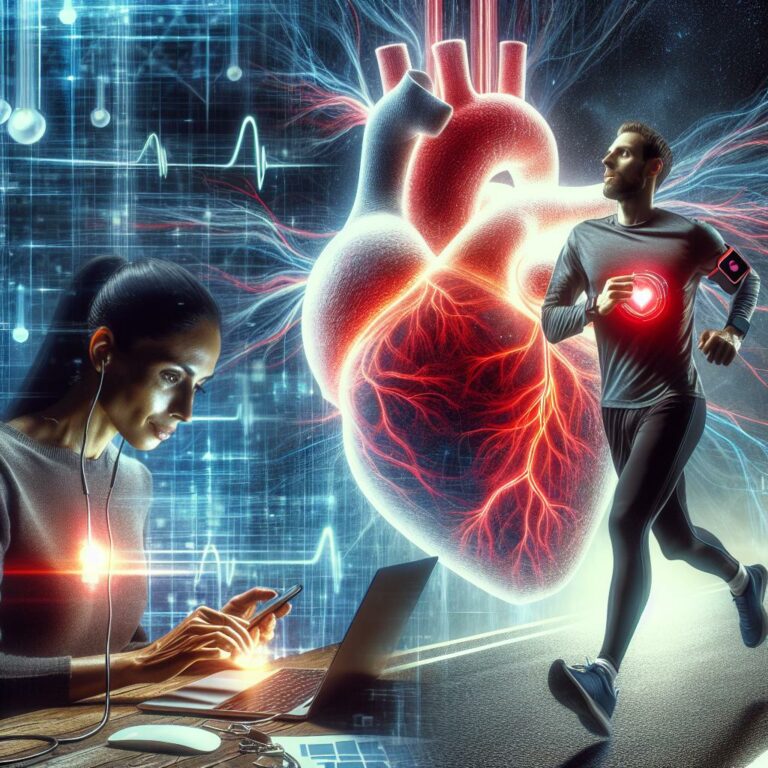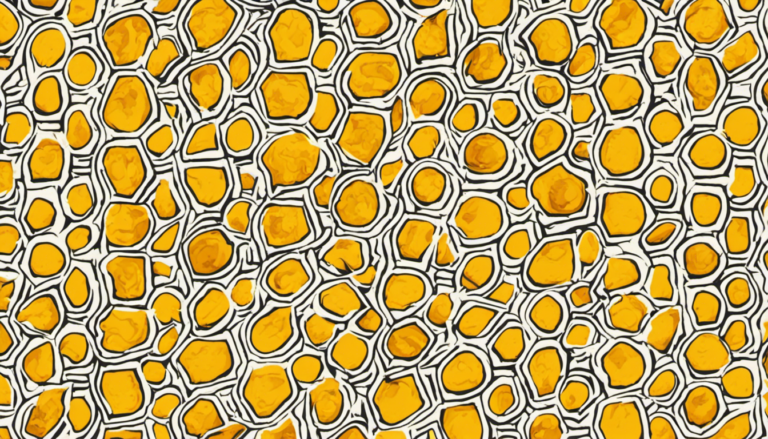Tech & Ticker: Revamping Health with Wearables and Apps
Once upon a digital era not so far away, technology and health commit to a radical partnership. This not be a regular health check, but instead, a revolution where the ticking heartbeat merges with tech’s incessant ticker tapes. Welcome to a world where health meets tech via wearable gadgets and apps; a world where wellness isn’t just a priority, but also a notification, a device-icon away. This article ventures into the riveting realm of the digital-health boon—exploring how today’s innovators are masterfully weaving the threads of technology and health to create a tapestry of unprecedented preventative care and wellbeing management. Prepare for a deep-dive into exploring how wearables and health apps are giving traditional healthcare a paradigm shift, promoting healthier lives, one digital pulse at a time. Curtains up for "Tech & Ticker: Revamping Health with Wearables and Apps"!
Table of Contents
- Exploring the New Age Connection: Technology and Health
- Breaking Barriers with Wearable Technology in Healthcare
- Harnessing the Power of Health Apps
- Elevating Healthcare: A Look at Future Trends and Recommendations
- Q&A
- Closing Remarks
Exploring the New Age Connection: Technology and Health
In the contemporary world, the integration of technology with healthcare has never been more significant. From conquering the highest peaks to plunging the deepest depths of the ocean, we humans succeed in all spheres by clinging to technological advancements. In the realm of health, modern tech giants are busy engineering high-end wearables and health apps that have the potential to revitalize the way we think about our health and well-being. These wearable gadgets range from fitness trackers and smartwatches to ultramodern devices that can monitor a plethora of vital stats.
These wearables, linked with health apps, have the capacity to track everything from distance covered in your morning jog, your heart rate spikes, glucose levels, to even your sleep quality. They provide a comprehensive overview of your health on a daily basis. Imagine having a personal health assistant who looks after your well-being 24/7.
- Fitness Trackers: Known for their ability to calculate steps, record exercise metrics, and even measure the quality of your sleep.
- Smartwatches: These high-tech devices do much more than displaying time, they chronicle your heart rate, blood pressure, and even oxygen saturation levels.
- Blood Sugar Monitors: These gadgets allow the user to track their glucose levels continuously, becoming a boon for patients dealing with diabetes.
You power-up your device, put it on, and that’s it! You’re ready to keep track of your health in a fun and interactive way.
Breaking Barriers with Wearable Technology in Healthcare
In an era where technology is taking a front-row seat, wearable technology is taking the healthcare sector by storm. The constantly improving advances offer exciting potential for improving people’s lives and revolutionizing the way we view health and wellness. It’s not just about the flashy gadgets on our wrist; it’s about cutting-edge combinations of sensors, algorithms, and AI working together to create a healthier future.
The integration of wearable technology in healthcare is undoubtedly transforming the patient-doctor relationship. Now, doctors have access to a vast array of data that was earlier unavailable, such as sedentary behaviour, physical activity, sleep patterns, and even symptoms of major health conditions. Here are some of the ways that wearable tech is breaking barriers in healthcare:
- Remote Monitoring: Devices such as smartwatches and fitness trackers offer real-time health monitoring, making it easier for both the patient and the healthcare provider.
- Chronic Disease Management: Wearable tech assists in tracking parameters crucial in managing diseases like diabetes, heart conditions, etc.
- Telemedicine: With video calls and live data transmission, technological devices allow for virtual consultations, thus reducing hospital visits.
- Health Motivation: It serves as a constant reminder to users about their health and daily activities and motivates them to lead a healthy life.
Simultaneously, mobile applications, in conjunction with wearable technology, are facilitating and streamlining healthcare in significant ways. It’s more than the correlation between tech and ticker—it’s about charting a new course and bringing health back into the hands of individuals.
Harnessing the Power of Health Apps
In the engaging context of health tech, wearables and apps have emerged as powerful allies in our pursuit of wellness. From monitoring physical metrics to offering mental health solutions, these technologies are redefining self-health. We’ve moved beyond simple step counting, heart-rate monitoring, to a more comprehensive health management. Clothing fabrics can now monitor your stress levels, eyewear can gauge your focus intensity and rings can assess your sleep quality. And these are just the tip of the iceberg.
A Boost to Personal Wellness Efforts:
The key element fueling this revolution is the unprecedented access to personal health data. This, coupled with actionable insights offered by AI, allows individuals to make informed health decisions. Get your wearable or download a health app and you can:
- Track your daily caloric intake
- Monitor your sleep cycle and quality
- Get nutrition advice personalized to your health needs
- Tailor your workouts to your current fitness levels
Transformative Effects on Healthcare:
While the individual benefits are impressive, the collective influence of health apps and wearables on healthcare at large is revolutionary. Ranging from remote patient monitoring to early detection of health anomalies, these technologies are contributing to a more efficient and personalized healthcare. Healthcare practitioners can leverage these tools to:
- Monitor patients’ health remotely
- Access up-to-date health record of patients
- Provide personalized care plans for patients
- Detect health anomalies early through continuous monitoring
Indeed, we are experiencing a new era of proactive health management, where technology bridges the gap between people and their health data in real-time.
Elevating Healthcare: A Look at Future Trends and Recommendations
The digital revolution has made its way into healthcare, dramatically changing the landscape and redefining the interaction between patients and healthcare providers. We’ve witnessed the rapid growth of health-related apps and wearable technology, a clear indication that the future of healthcare lies in personalizing the patient experience, empowering individuals to take charge of their health, and harnessing the power of data for early diagnosis and preventive care.
From wearable sensors that track heart rate and measure quality of sleep to applications that provide medical reminders and diet recommendations, the new wave of technology improves accessibility, enhances care, and promotes proactive health management. Take a look at some of the ways how digital health tools are redefining the medical field:
- Wearable technology equipped with neural networks offers continuous health monitoring, acting as an early warning system for potential risks.
- Health applications make it easy for patients to keep track of medication, appointments, and overall health status, leading to better compliance and health outcomes.
- Telemedicine, powered by advanced communication tools, breaks down geographical barriers, allowing healthcare providers to deliver care anytime, anywhere.
- Artificial Intelligence (AI) tools are increasingly being used for tasks ranging from identifying medical images to predicting patient outcomes, significantly improving diagnostic accuracy.
On the surface, this integration of technology in healthcare seems all positive. However, as is the case with all innovations, there are challenges and concerns which need to be adequately addressed. Privacy and data security, regulation of health tech products, their accuracy and the risk of over-reliance on technology for health matters are just a few of these. Hence, it is essential that these digital tools are carefully designed, properly regulated, and thoughtfully integrated into the healthcare system. After all, the end goal is clear – the creation of an advanced healthcare system that is efficient, patient-centred and capable of delivering superior care.
Q&A
Q: What is the underlying motive behind pairing tech with health?
A: The fundamental goal is to leverage the capabilities of modern technology to enhance healthcare delivery, make it more personalized, and improve health outcomes.
Q: What are some examples of health-related wearables?
A: Examples of health-related wearables include fitness trackers like Fitbit, heart rate monitors, sleep trackers, and smartwatches with capabilities to measure various health metrics such as oxygen levels.
Q: How do these wearables help in improving health?
A: They track real-time information about the body including heart rate, sleep patterns, steps taken, and calories burned. This data can be invaluable in assessing the user’s health condition and even signal early warning signs of potential health problems.
Q: How do health apps complement these wearables?
A: Health apps sync with wearables to gather this data, provide comprehensive overviews of a user’s health status, offer insights based on patterns, and suggest lifestyle changes or workouts. They essentially enable people to become active participants in managing their own health.
Q: I have heard about mental health apps as well. Do they fall into the same category?
A: Absolutely. An important subcategory of health apps centers on mental health. These apps can offer resources like therapy sessions, meditation guides, stress management tools, and mood tracking, making mental health more accessible and manageable.
Q: Who really benefits from these health tech advancements?
A: While patients stand to gain directly from using these tools to monitor and manage their health, they are also beneficial to healthcare providers. Doctors and nurses can access real-time, accurate data about a patient’s health to administer targeted treatments. Researchers also benefit from the vast data resources that wearables and apps create.
Q: Is the information captured by wearables and health apps always accurate?
A: While these devices are getting increasingly accurate, occasional discrepancies and errors do occur. It’s always a good practice to treat this information as supplementary rather than a substitute for professional medical advice.
Q: Are there any privacy concerns related to these wearables and apps?
A: As with any technology dealing with user data, privacy is a legitimate concern. Users must ensure they understand the terms and conditions under which their data will be stored, used, and shared. Developers, in turn, are tasked with employing robust security measures to protect personal information.
Q: What does the future look like for health tech?
A: The future of health tech appears very promising. Continued advancements in AI and machine learning could make these gadgets and apps more intuitive and insightful. The ultimate aim remains to create a holistic ecosystem that seamlessly integrates technology with healthcare for better outcomes.
Closing Remarks
As we step into the future and continue to intertwine our lives with technology, the promise of a healthier life seems ever more tangible. It may not be the complete revolution of health we’re dreaming of, yet the tiny disruptive waves caused by wearables and health-related apps are indispensable. From tracking your steps, monitoring your vital signs, to keeping tabs on your sleeping pattern, technology ceaselessly works on turning us into our own health assemblaries. The dawn of the digital health era is upon us, and with it, the potential to recast healthcare as we know it. We, as consumers and beneficiaries, are now at the helm, to steer, engage, experiment, adopt, and lead healthier lives. It’s as simple and complicated as Tech meets Ticker— a constant duet between man and machine, imbuing us with more power and responsibility towards our own wellness. So, wear it, app it and step into the bright and healthy tomorrow forged by the hands of brilliant innovations.






